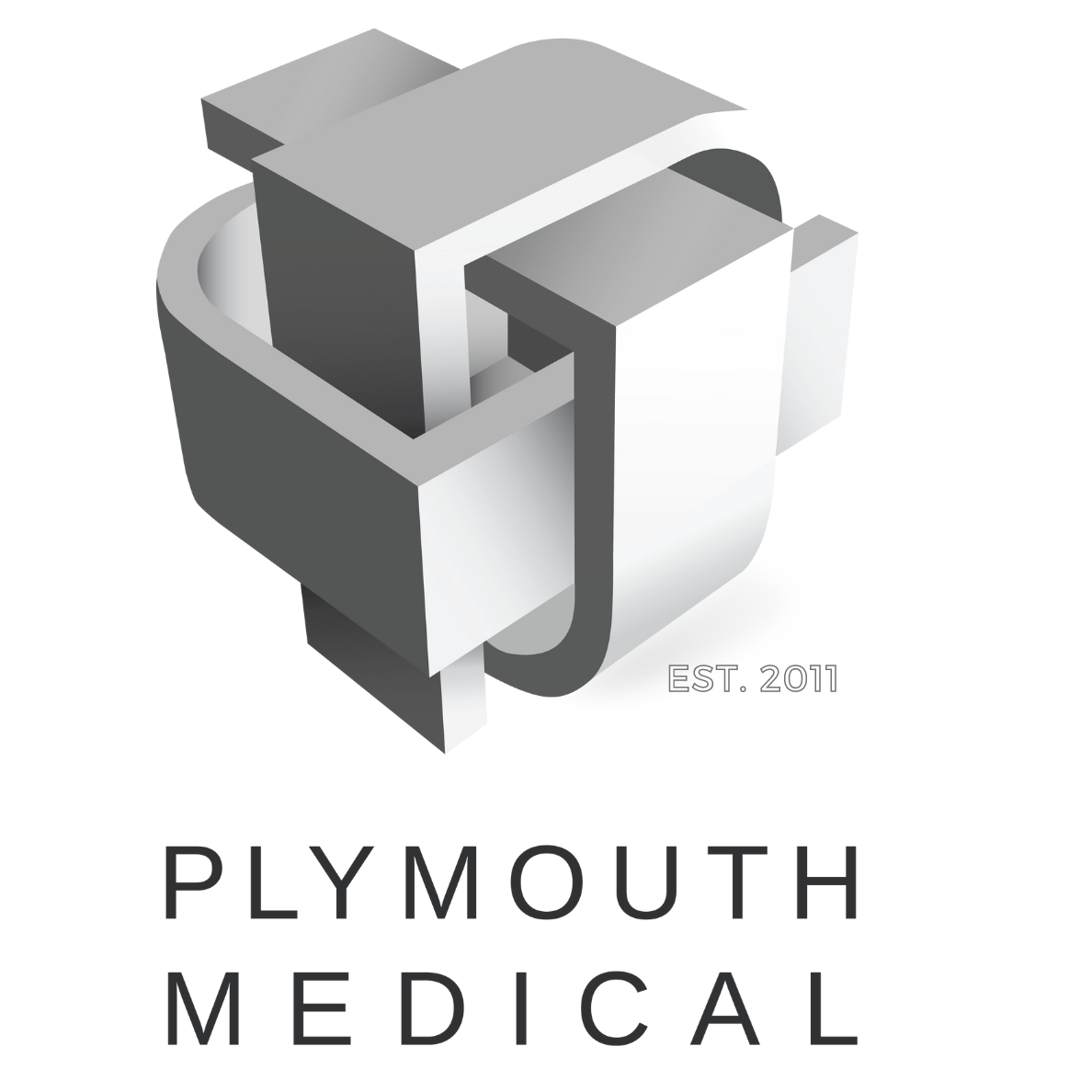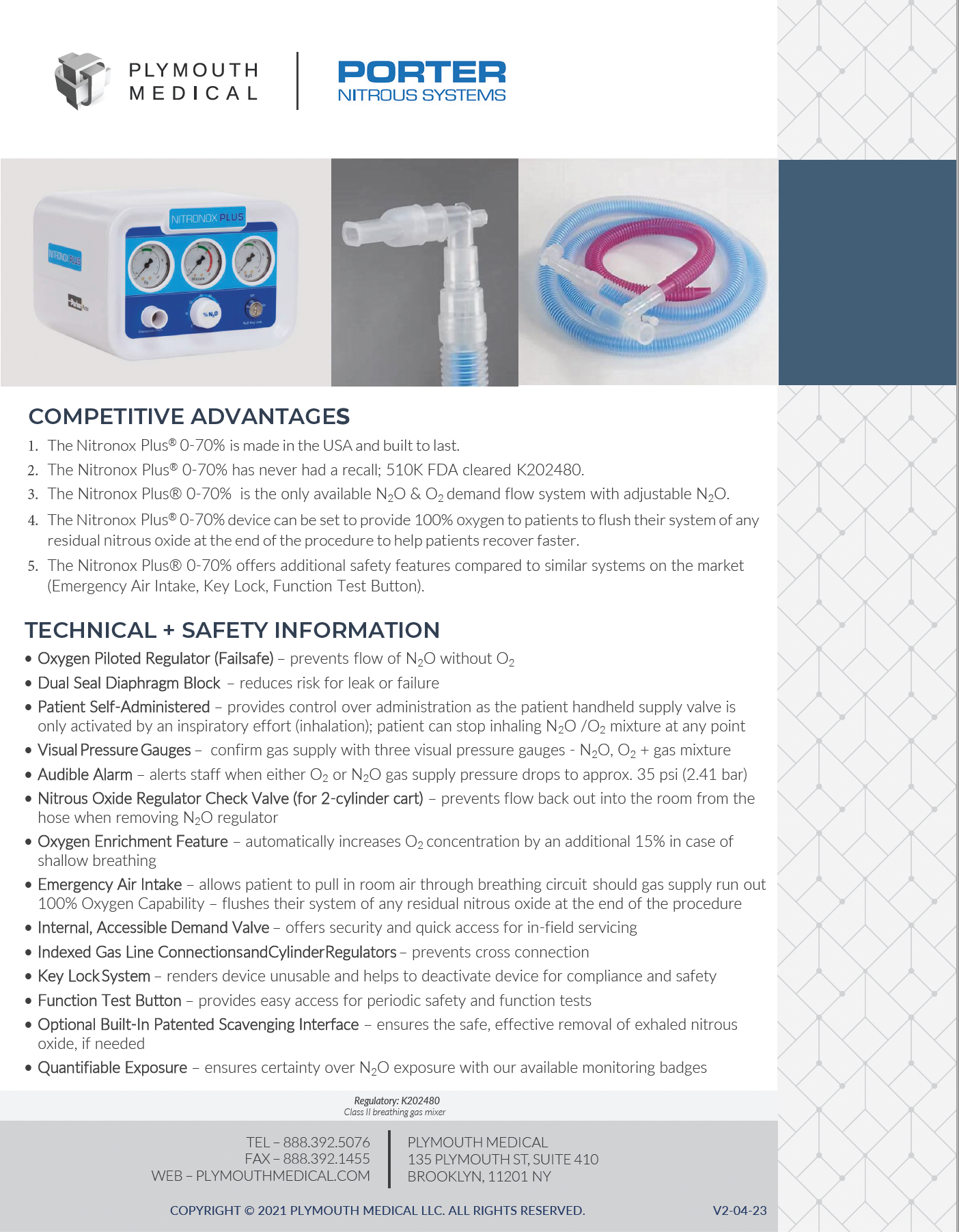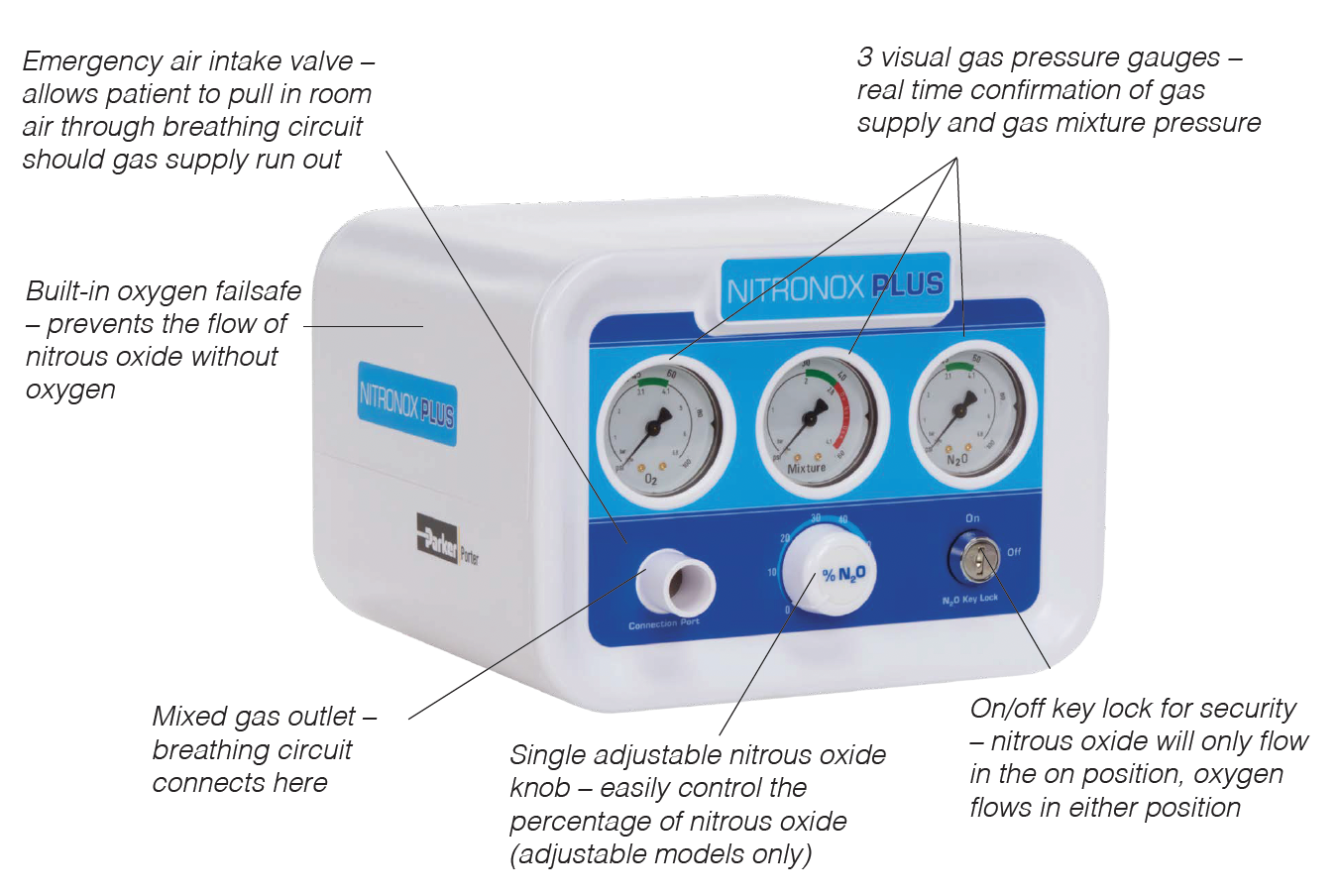NITRONOX PLUS® 0-70%, NITRONOX PLUS® 50/50 & PRO-NOX™ COMPARISON
There are only a few devices that provide demand flow nitrous oxide analgesia: the Nitronox® line which is made in the US and the Pronox™ line which is made in Canada. We compare these 3 devices here to help our clients decide which is best for their use cases.
FREQUENTLY ASKED QUESTIONS
1. Is Nitronox® nitrous oxide analgesia safe?
Nitrous oxide has been used for over 150 years* and has a longstanding safety record. When the Porter Nitronox® nitrous oxide analgesia system is used, patients are awake (conscious), responsive, and breathing on their own.
* Nitrous Oxide for the Management of Labor Analgesia. AANA Journal, February 2018, Vol. 86, No. 1
2. What safety mechanisms do our Porter Nitronox® nitrous oxide analgesia systems have?
Oxygen Fail-Safe preventing flow of N2O without O2 (system will not work without O2)
Diameter indexed gas line connections (cannot cross connect gas hoses)
Pin-Indexed cylinder regulators (cannot cross connect regulators to cylinders)
Patient has control over self-administration (can stop inhaling N2O /O2 mixture at any point)
N2O regulator check valve for 2-cylinder cart (when removing N2O regulator to change cylinders, check valve prevents flow back out into the room from the hose and device)
Visual pressure gauges for real time visual confirmation of gas and mixture supply (Nitronox Plus® only) / Visual flow tubesfor real time confirmation of gas and mixture supply (Continuous Flow Systems only)
Nitronox Plus® only:
O2 enrichment feature increases oxygen% if repetitive pattern of shallow breathing
Dual seal diaphragm block reduces risk for leak or failure
Low Inlet Pressure Alarms sound when either O2 or N2O gas supply pressure drops to approximately 35 psi (2.41 bar)
Emergency Air Intake allows the patient to breathe room air in the event that the oxygen as supply is depleted or disconnected, and delivery of mixed gas is stopped
Key Lock safety feature allows the user to prevent unauthorized use of the Nitronox® Nitrous oxide analgesia system
3. Is Nitronox® nitrous oxide analgesia flammable?
No, neither N2O or O2 are flammable. However, they are both oxidizers which support combustion. If you have a fuel source, heat source and add an oxidizer – there is potential for hazard. If you are utilizing lasers for medical aesthetic procedures, contact the laser manufacturer for recommendations on the use of Porter Nitronox® nitrous oxide analgesia.
4. Are there risks with nitrous oxide?
Nitrous oxide is a “drug” with contraindications for use. There are also occupational concerns and risks to be aware of. Contraindications are very well documented and easy to assess. Occupational risks can be monitored and managed effectively. Additional risks could include combining N2O / O2 with other drugs and medications.
5. Is using a Porter Nitronox® nitrous oxide analgesia system considered anesthesia?
No, Porter Nitronox® nitrous oxide analgesia systems provide patients with minimal conscious sedation. Patients will be awake and able to respond to commands.
6. What are common side effects that one might see?
The most common side effects are dizziness, nausea, and vomiting. These side effects can be quickly reversed by having the patient remove the mask/mouthpiece and breathe room air.
7. Who can administer Nitronox® nitrous oxide analgesia?
Typically, you will not find a specific regulation saying who can administer Nitronox® nitrous oxide and oxygen. It is the treating clinician’s responsibility to ensure that the use of N2O / O2 are within their scope of practice. You should review guidelines from your governing body or state medical board. What you would want to look for is whether it is within your scope of practice to administer pain management medications, minimal conscious sedation, anxiolysis, analgesia, etc. If the answer is yes, N2O / O2 should be no different. For the most part, use of Porter Nitronox® nitrous oxide analgesia falls under the same umbrella as administering a local anesthetic.
8. Will my malpractice insurance be affected by adding a Nitronox® nitrous oxide analgesia device?
In most cases the answer is no – as you are already covered for pain management, minimal sedation, analgesia, etc. That said, the treating clinician may wish to notify your malpractice carrier if you have concerns.
9. Are there regulations for use?
Typically, you will not see a regulation specific to the use of Nitronox® nitrous oxide analgesia for physicians or nurses. This falls under the same umbrella as utilizing pain medications, local anesthetics, analgesia, and minimal sedation.
10. Should the patient be continually monitored by a HCP during a procedure when Nitronox® nitrous oxide analgesia is being used?
Yes, the patient should never be left alone when Nitronox® nitrous oxide analgesia is being used.
11. Are there risks of patient falling during use of Nitronox® nitrous oxide analgesia?
As with the use of any pain medication, there is risk that a patient may be unsteady, light-headed or dizzy which could be a fall risk. It is recommended that the patient remains seated or lying down for the duration of the procedure. Allow the patient to recover for 5-10 minutes following the discontinuation of Nitronox® nitrous oxide analgesia.
12. Is there an insurance code?
There are currently no CPT medical codes for the use of Nitronox® nitrous oxide analgesia. Some physicians will choose to charge an out of pocket fee - It is not uncommon to see cash fees range from $50 to $150. Conversely, physicians may also consider using Nitronox® nitrous oxide analgesia systems as a marketing tool to help assist with attracting patients and choose to offer it at no charge.
13. How fast does Nitronox® nitrous oxide analgesia take effect and last?
The onset of the effects of Nitronox® nitrous oxide analgesia vary from patient to patient. Effects can be felt in as little as 30 seconds or it could take several minutes. For the fastest onset, make sure the patient keeps the mask securely on their face. Once the patient stops inhaling the gas mixture, it will be completely out of their system within 5-10 minutes*. They will start feeling back to normal almost immediately.
* Nitrous Oxide for the Management of Labor Analgesia. AANA Journal, February 2018, Vol. 86, No. 1






